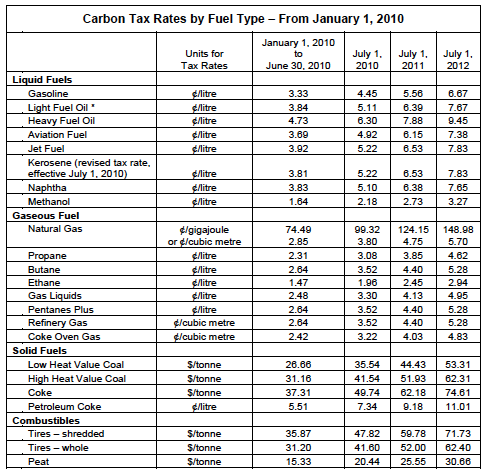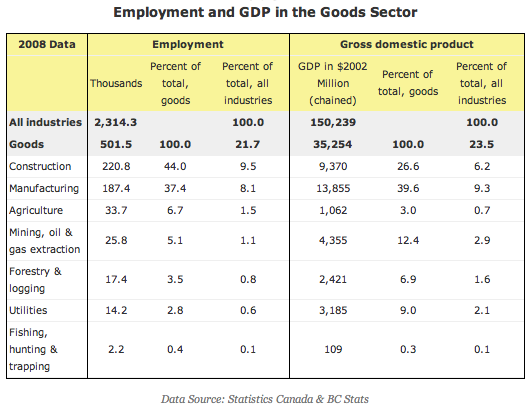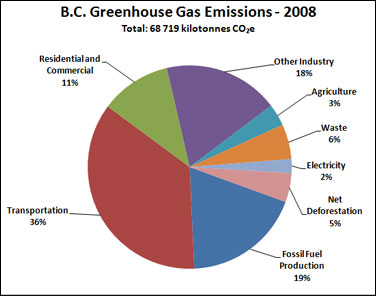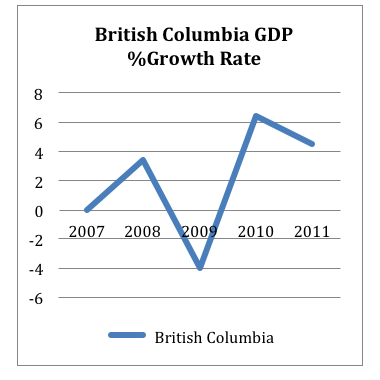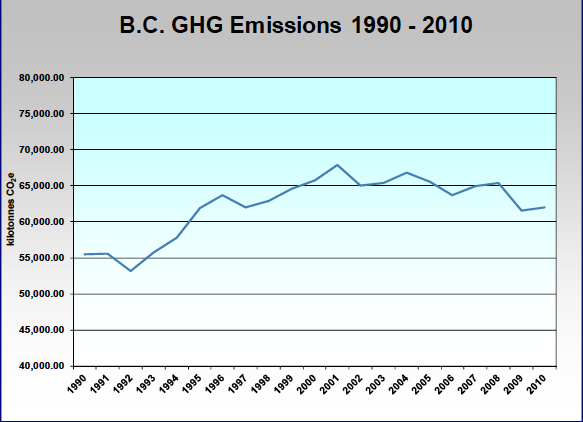The Policy Origin of BC Carbon Tax:
In November 2007, the “Intergovernmental Panel on Climate Change” – representing the most respected climate experts worldwide – issued a report with the most decisive evidence yet showing that Earth’s climate is changing because of human activities. The effects will continue to worsen if no action is taken.
Based on those decisive evidences, BC government launched Revenue Neutral Carbon Tax. The goal of the carbon tax is reduce 33 percentage of greenhouse emission by 2020. This carbon tax is equal to 800,000 car off the road annually.
What is the Carbon Tax?
Carbon tax is defined as a tax based on greenhouse gas emission generated during burning fuel. Carbon tax put an additional expense on greenhouse gas emission. This policy will elicit powerful market to response to entire economy, resulting reducing carbon emission. According to this statement from BC ministry of finance, we understand Carbon Tax is aim at using market power to change the dependence of fuel energy and to protect the environment. But there are any principles for BC Carbon Tax policy? The distribution effect of carbon tax is always controversial to the public.
Here are five Principles of BC Carbon emission:
l All carbon tax revenue is recycled through tax reductions
This mean the Carbon tax revenue will not run into government running program. That money collected by carbon will use to reduce the income tax of individual and corporation rather than to fund government program.
l The tax rate started low and increases gradually
l Low-income individuals and families are protected
“A refundable Low Income Climate Action Tax Credit is designed to help offset the carbon tax paid by low-income individuals and families.”
l The tax has the broadest possible base
Virtually all emissions from fuel combustion in B.C. captured in Environment Canada’s National Inventory Report are taxed, with no exemptions except those required for integration with other climate action policies in the future and for efficient administration.
l The tax will be integrated with other measures
“The carbon tax will not, on its own, meet B.C.’s emission-reduction targets, but it is a key element in the strategy. The carbon tax and complementary measures such as a “cap and trade” system will be integrated as these other measures are designed and implemented.”
How to implement BC Carbon Tax:
The amount of carbon in fuel will decide what much carbon tax has to pay. This simply fact make the administration process relatively simple.
The detail process is: “Administratively, the carbon tax is applied and collected in essentially the same way that motor fuel taxes are currently applied and collected, except natural gas, which is collected at the retail level.”
Motor fuel taxes collecting process are relatively mature and easy to be implemented. In order to minimize the administration cost, BC government adopt this method.
Here is the Tax Rate for different type of fuels:
From here, we could tell that carbon tax rate start low and is gradually growing in the past 2 years. There are 23 subject are related to Carbon Tax. Not only gasoline, but also the gas, coal and tires are involved.
Now, the question is “Does carbon tax cover all the greenhouse gas emissions?”
The fact is the carbon tax applies to virtually all emissions from burning fuels, which accounts for an estimated 70 per cent of total emissions in British Columbia. Of the approximately 30 per cent of emissions that are not from fuels:
- 10 per cent are from non-energy agricultural uses (e.g. emissions from enteric fermentation, manure management, and agricultural soils) and waste (landfills);
- 10 per cent are from fugitive emissions which cannot currently be accurately measured;
- 6 per cent are non-combustion industrial process emissions; and
- 5 per cent are from net deforestation.
“The Province will look at options to extend the carbon tax to emissions beyond those generated by the purchase and use of fuels, and integrate the carbon tax with other climate action initiates such as cap-and-trade.”—-BC Ministry of Finance
How effectiveness of this Policy:
From my perspective, there must be some criteria to measure the effectiveness.
l Growing GDP:
BC Carbon tax should not be implemented with a huge cost of BC economy. There is no doubt that BC Carbon tax will heavier the tax burden for energy intensive industry. But an expected result of BC carbon tax is to change individuals and companies bad energy consumption behavior. Using the power of market, the fuels energy will become more and more expensive to use.
The above table describes the main industries and employment of British Columbia in 2008. Now the next step is to check about the main industries with high GHG emission. After matching the main industries in BC and source of GHG emission, we could have a basic idea weather carbon tax will heavily influence BC economy or not.
Here is the Pie Chart:
From those two graphs, we could understand that BC tax will have limited impact on BC economy. Construction and Manufacturing account 18% of BC total GDP. However, the main carbon emission is from Transportation, Fossil Fuel Production, and residential & commercial. (56% of total emission) Carbon tax will influence the competitiveness of BC construction and manufacturing in the short term, but considering the future better economy, carbon tax is a reasonable price pay to give up bad energy consumption habit.
Unlike the critics of carbon tax, BC economy performance is even better than average of Canada. At least, at this point, BC Carbon was not stopping the economic growth in BC. The critics of BC carbon tax exaggerate the cost of implementing this policy. Those GDP performance records indicate individual and companies BC are currently changing its energy consumption behaviour.
l Greenhouse Gas Emission
The second Criteria are how much GHG emission has been reducing through put Carbon Tax.
According to the CBC report, British Columbia Province cut more GHG emission than other province in Canada. However, the data seems fluctuated year by year. It is not an easy battle for BC to cut GHG emission. But the target of BC is in 2020, cut 33 percent GHG emissions on 2007 Base.
The above table is from British Columbia GHG inventory report.
l Distribution Effect
A successful policy of cutting GHG emission should provide a positive incentive to the public. Personally, I believe BC tax credit is essential for implementing Carbon tax. Tax reduction gives both individuals and companies a incentive to increasing energy efficiency and changing old energy consumption system.
Here is projected Carbon Tax Revenue and Tax Reduction in BC 2012/13:
From my perspective, the low-income family was not sacrificed by carbon tax. Small-Size companies and low-income families are actually better off due to this policy. More tax cuts are distributed on those individuals and small Business. Those policy designs build a solid foundation that people will support for carbon tax. Recent polling for the Pembina Institute shows that public support for the carbon tax remains strong; strong for a tax, at least.
In conclusion, BC Carbon Tax is a successful policy both for environment and economy. But I am saying this is a prefect policy. There is still a potential problem of BC carbon tax. Only 75% percent of GHG emission were taxed, in order to secured the GHG cutting emission goal in 2020, the technology and policy must be continually updated.
Reference:
BC Ministry of Finance: http://www.gov.bc.ca/fin/
BC GHG Inventory Report
Statistic Bureau of Canada
http://guidetobceconomy.org/major_industries/goods_sector.htm

